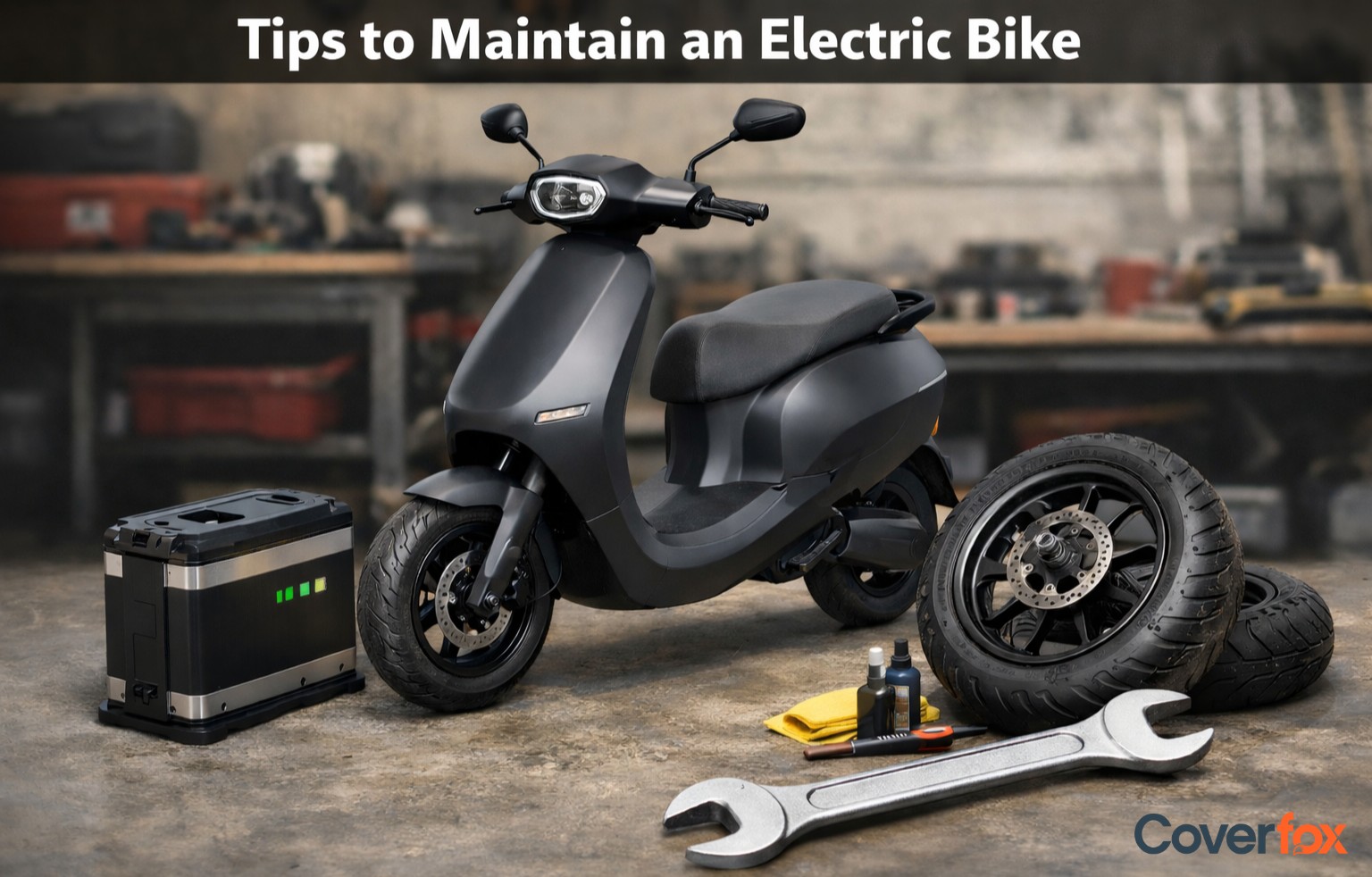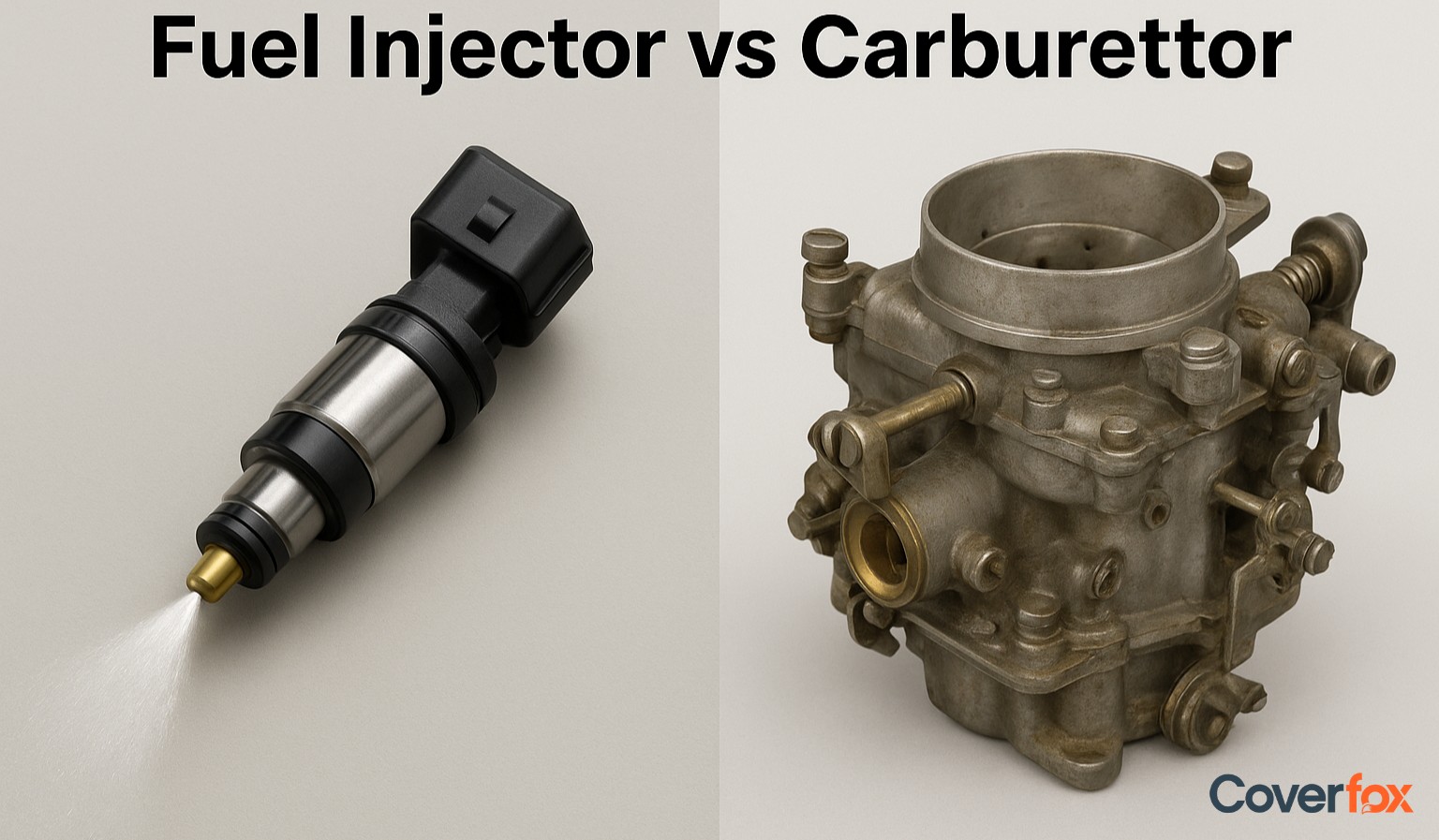Electric Vehicles (EVs) are on the rise in the Indian automobile market. People are making the switch to EVs for sustainability, and low recharge costs.

Last year itself, a total of 1,950,490 EVs were sold in India and by July 29, 2024, a total of 4,574,938 electric vehicles were registered across India. EVs come in different types for two-wheelers and four-wheelers as well. If you are planning on buying an Electric Vehicle for yourself, you will come across several questions like need for EV Insurance, which type will suit your needs or the legal requirements for owning an EV. You will find answers to all those questions here.
What Is an Electric Vehicle (EV)?
A vehicle that uses electric power or electricity to operate is known as an electric vehicle. EVs get power from an electric motor or battery that helps them run. This battery or motor can be charged externally through a dedicated charger. The charger of an EV comes in 2 different types one is regular and other is a fast charger. These vehicles do not emit any harmful gases or emissions like fossil fuels do. Therefore, making it a sustainable choice. EVs come for different types of vehicles like two-wheelers, three-wheelers and four-wheelers. Nowadays, almost every type of vehicle has an electric variant.
Types of Electric Vehicles Explained
There are multiple types of electric vehicles and each type has its own uniqueness. They are differentiated on the basis of how they work, hybrid potentiality, battery type, etc. Let us get into detail about all the different types of EVs available:
1. Battery Electric Vehicle (BEV)
BEVs or Battery Electric Vehicles are the most basic type of EVs. BEV runs on a single or multiple batteries without any fuel substitution, making it a complete electric vehicle. As there are no fossil fuels or any type of burning fuels involved, there is literally no emissions from this vehicle, causing negligible air pollution. Hence, for anyone looking for a sustainable option, BEVs are the perfect choice. There are multiple charging stations across the country for BEVs publicly and you can get one at home as well. BEVs have a range up to 500 km (depending on the model) on a full charge.
Pros and Cons of BEVs
| Pros | Cons |
|---|---|
| Zero tailpipe emissions | Limited vehicle options (Although new vehicles are releasing) |
| Lower operating costs | Longer recharging time compared to ICE vehicles |
| Quiet and smooth operation | Higher upfront cost |
Popular BEV Models in India
| Model | Approximate Price (Ex-showroom) |
|---|---|
| Tata Harrier EV | ₹21.49 lakh |
| Tata Nexon EV | ₹12.49 lakh |
| Tata Tiago EV | ₹7.99 lakh |
| Mahindra BE 6 | ₹18.90 lakh |
| MG Comet EV | ₹6.17 lakh |
2. Plug-in Hybrid Electric Vehicle (PHEV)
Plug-in EVs or more popularly known as PHEVs uses electricity to use the electric motor and also has petrol/diesel to power the engine. It can use electric only mode till the battery runs out and after that it switches back to petrol/diesel, making it a hybrid version. You can recharge the battery with an external charger or regenerative braking. It has a limited electric range, meaning you can only travel short distances on electric mode.
Pros and Cons of PHEVs
| Pros | Cons |
|---|---|
| Flexibility of fuel and electric power | Higher cost due to dual systems |
| Reduced fuel consumption | Limited electric-only range |
| Lower emissions than conventional vehicles | Complex maintenance |
Popular PHEV Models in India
Currently, PHEVs are not widely available in the Indian market. However, some global models like the Toyota Prius Plug-in Hybrid and Volvo XC90 Recharge are expected to enter the market in the future.
3. Hybrid Electric Vehicle (HEV)
HEVs are a combination of a conventional internal combustion engine and an electric propulsion system. Unlike PHEVs, HEVs cannot be charged externally; the battery is charged through regenerative braking and the engine. HEVs are oftentimes referred to in a short way as hybrids. It has a range similar to a conventional vehicle but has better fuel efficiency.
Pros and Cons of HEVs
| Pros | Cons |
|---|---|
| Improved fuel efficiency | Higher initial cost than conventional vehicles |
| Lower emissions | Limited electric-only driving |
| No need for external charging | Complex powertrain |
Popular HEV Models in India
| Model | Approximate Price (Ex-showroom) |
|---|---|
| Toyota Urban Cruiser Hyryder | ₹11.34 - ₹19.99 lakh |
| Maruti Suzuki Grand Vitara | ₹11.42 - ₹20.68 lakh |
| Toyota Innova Hycross | ₹19.94 - ₹32.58 lakh |
| Toyota Camry | ₹48.50 lakh |
4. Mild Hybrid Electric Vehicle (MHEV)
MHEVs or Mild Hybrid Electric Vehicles cannot run on electricity solely. They use a small electric motor and battery to assist the engine, improving fuel efficiency. Even though it has electric in its name, it is not conventionally an EV, it just uses electricity to help boost the engine and reduce CO2 emissions by a little.
Pros and Cons of MHEVs
| Pros | Cons |
|---|---|
| Improved fuel efficiency | Cannot run solely on electric power |
| Lower emissions | Minimal electric assistance |
| Feels same as conventional car | Limited environmental benefits compared to full hybrids |
Popular MHEV Models in India
| Model | Approximate Price (Ex-showroom) |
|---|---|
| Toyota Fortuner 48V Mild Hybrid | ₹44.72 lakh |
| Maruti Suzuki Brezza | ₹9 lakh |
| Audi Q8 | ₹1.15 crore |
5. Range-Extended Electric Vehicle (RE-EV)
Pros and Cons of RE-EVs
| Pros | Cons |
|---|---|
| Extended driving range | Presence of an internal combustion engine |
| Reduced range anxiety | Higher complexity and cost |
| Lower emissions than conventional vehicles | Limited availability in India |
Popular RE-EV Models in India
Currently, RE-EVs are not widely available in the Indian market. However, models like the BMW i3 REx have been available in other markets and may enter India in the future.
6. Fuel Cell Electric Vehicle (FCEV) - Hydrogen Cars
FCEVs use a new technology, a chemical reaction to generate electricity in cars. They are known as hydrogen cars. They generate electricity through a chemical reaction between hydrogen and oxygen, emitting only water vapour as a byproduct. On a full tank it can go up to 600 kms depending on the model and tank size. The hydrogen stored in tanks reacts with oxygen in a fuel cell to produce electricity, powering the electric motor, therefore it contains a fuel tank to store hydrogen.
Pros and Cons of FCEVs
| Pros | Cons |
|---|---|
| Zero tailpipe emissions | Limited hydrogen refuelling infrastructure |
| Quick refuelling time | High vehicle and fuel costs |
| Long driving range | Limited availability in India |
Popular FCEV Models in India
| Model | Approximate Price (Ex-showroom) |
|---|---|
| Toyota Mirai | ₹60 lakh (pilot program) |
Comparison Table of Electric Vehicle Types
This table will summarize and help you decide which type will suit your needs the best:
| Type of EV | Power Source | Charging | Electric-Only Range | Best For |
|---|---|---|---|---|
| Battery Electric Vehicle (BEV) | Only electric motor + large battery | Yes (external charging) | 100–400 miles (160–640 km) | Eco-conscious users; daily city drives |
| Plug-in Hybrid Electric Vehicle (PHEV) | Combines fuel engine + electric motor | Yes (external charging) | 20–50 km (electric only) | Users wanting electric + fuel flexibility |
| Hybrid Electric Vehicle (HEV) | Fuel engine + electric assist motor | No (self-charging via braking) | Minimal (not primary source) | Fuel efficiency without range anxiety |
| Mild Hybrid Electric Vehicle (MHEV) | Fuel engine + small assist battery | No (self-charging) | None | Budget-conscious drivers; small boosts |
| Range-Extended EV (RE-EV) | Electric motor + fuel-powered generator | Yes + self-charging generator | High (battery-driven, extended by fuel) | Long-distance drives without charge fear |
| Fuel Cell EV (FCEV) | Hydrogen fuel cell + electric motor | No; hydrogen refuelling | 300–400 miles (480–640 km) | Zero-emission users in hydrogen-equipped areas |
Key Pros and Cons of Switching to Electric Vehicles
Key Pros of Switching to Electric Vehicles
Lower Running Costs
Environmentally Friendly
Government Incentives
Quiet and Smooth Drive
Low Maintenance
Instant Torque
EVs are cheaper to run than petrol or diesel vehicles due to lower electricity prices and fewer moving parts.
No tailpipe emissions help reduce air pollution and greenhouse gases, improving urban air quality.
Schemes like FAME-II offer subsidies, tax exemptions, and reduced registration fees.
Electric motors offer a silent, vibration-free, and responsive driving experience.
Fewer mechanical parts mean fewer breakdowns and less servicing.
EVs deliver immediate acceleration, enhancing city-driving performance
Key Cons of Switching to Electric Vehicles
Limited Charging Infrastructure
Higher Initial Cost
Range Anxiety
Battery Replacement Cost
Long Charging Time
Limited Model Availability
Public charging stations are still developing in many parts of India, especially Tier-2/3 cities.
EVs often cost more upfront compared to conventional vehicles, despite long-term savings.
Limited driving range and fear of battery drain can be a concern on long trips.
While batteries last many years, replacement can be expensive when required.
Even with fast chargers, it takes longer to recharge an EV compared to refuelling a petrol/diesel vehicle.
Fewer models are available in specific segments (e.g., pickup trucks, luxury SUVs).
Insurance Availability for Electric Vehicles
Just like you need auto insurance for conventional petrol/diesel vehicles, you need four wheeler insurance and two wheeler insurance for Electric Vehicles as well. As per law, you still need to get a third-party cover for your E-bike or Electric cars to be able to legally drive on public roads of India. Here are the IRDAI rates for third-party insurance for electric vehicles:
| Vehicle Category | Power Output / Capacity | Annual Premium (₹) |
|---|---|---|
| Private Electric Cars | Not exceeding 30 kW | 1,780 |
| Private Electric Cars | Exceeding 30 kW but not exceeding 65 kW | 2,904 |
| Private Electric Cars | Exceeding 65 kW | 6,712 |
| Electric Two-Wheelers | Not exceeding 3 kW | 457 |
| Electric Two-Wheelers | Exceeding 3 kW but not exceeding 7 kW | 607 |
| Electric Two-Wheelers | Exceeding 7 kW but not exceeding 16 kW | 1,161 |
| Electric Two-Wheelers | Exceeding 16 kW | 2,383 |
Also Read:
Frequently Asked Questions
What are the main types of electric vehicles?
The main types of electric vehicles include BEV, PHEV, HEV, MHEV, RE-EVs and FCEV.
What is the difference between BEV and PHEV cars?
BEV are primarily electric cars without any fossil fuel requirements, whereas PHEV are a hybrid version of an EV, using electric motors for short distances and then conventional engines when the battery is depleted.
Are hybrid cars considered electric vehicles?
No, BEVs are considered electric vehicles, HEVs use electricity to power up the engine to increase fuel efficiency.
Do you have to charge hybrid vehicles?
No, you do not have to externally charge hybrid vehicles, they use regenerative braking to charge itself.
Which type of electric car is best for long distances?
RE-EVs are the best type of EVs for long distances.
How much do electric vehicles cost compared to traditional vehicles?
EVs cost significantly higher than a traditional vehicle, but in the long-run provide better cost effectiveness because of the rising fuel costs.





